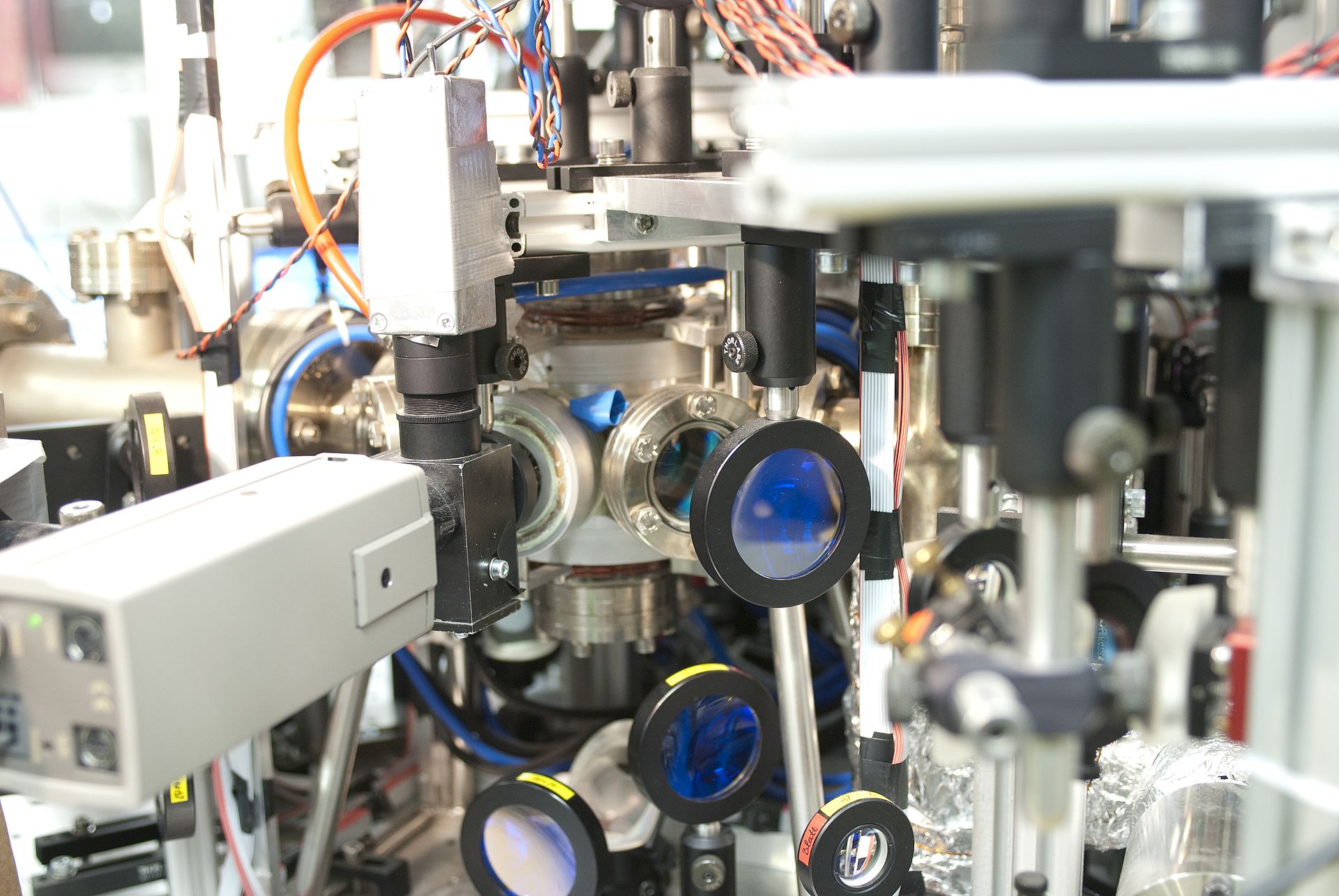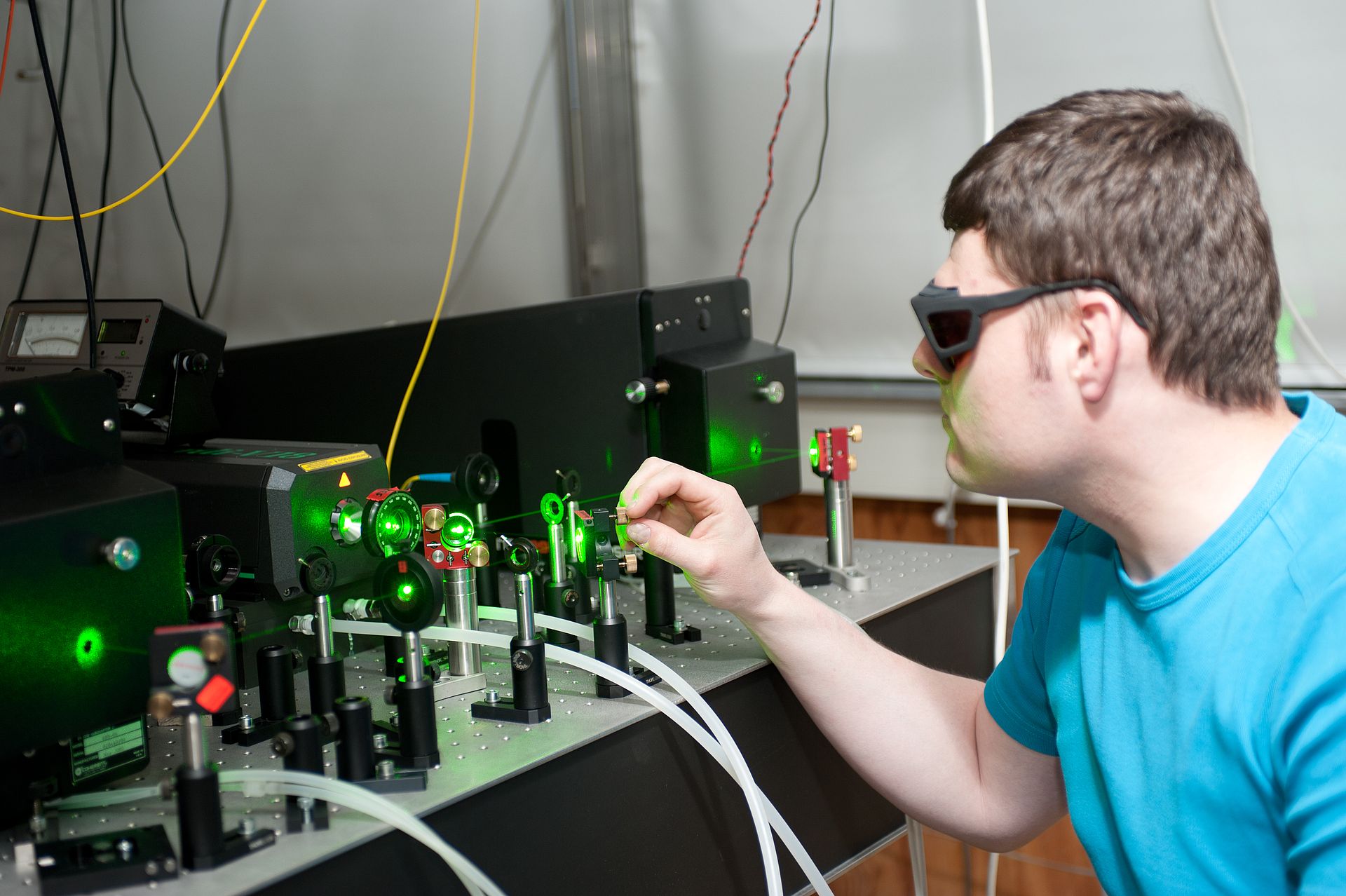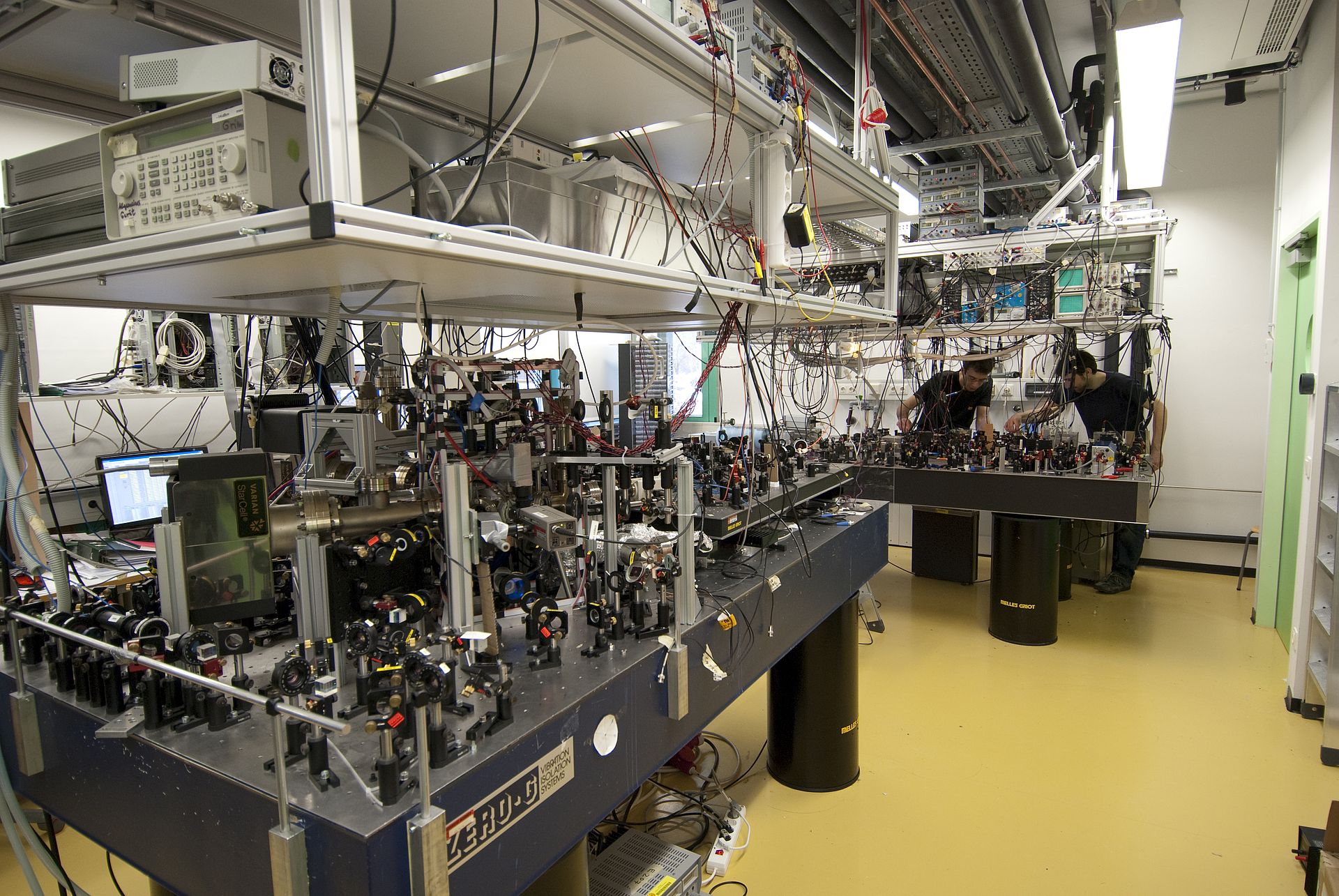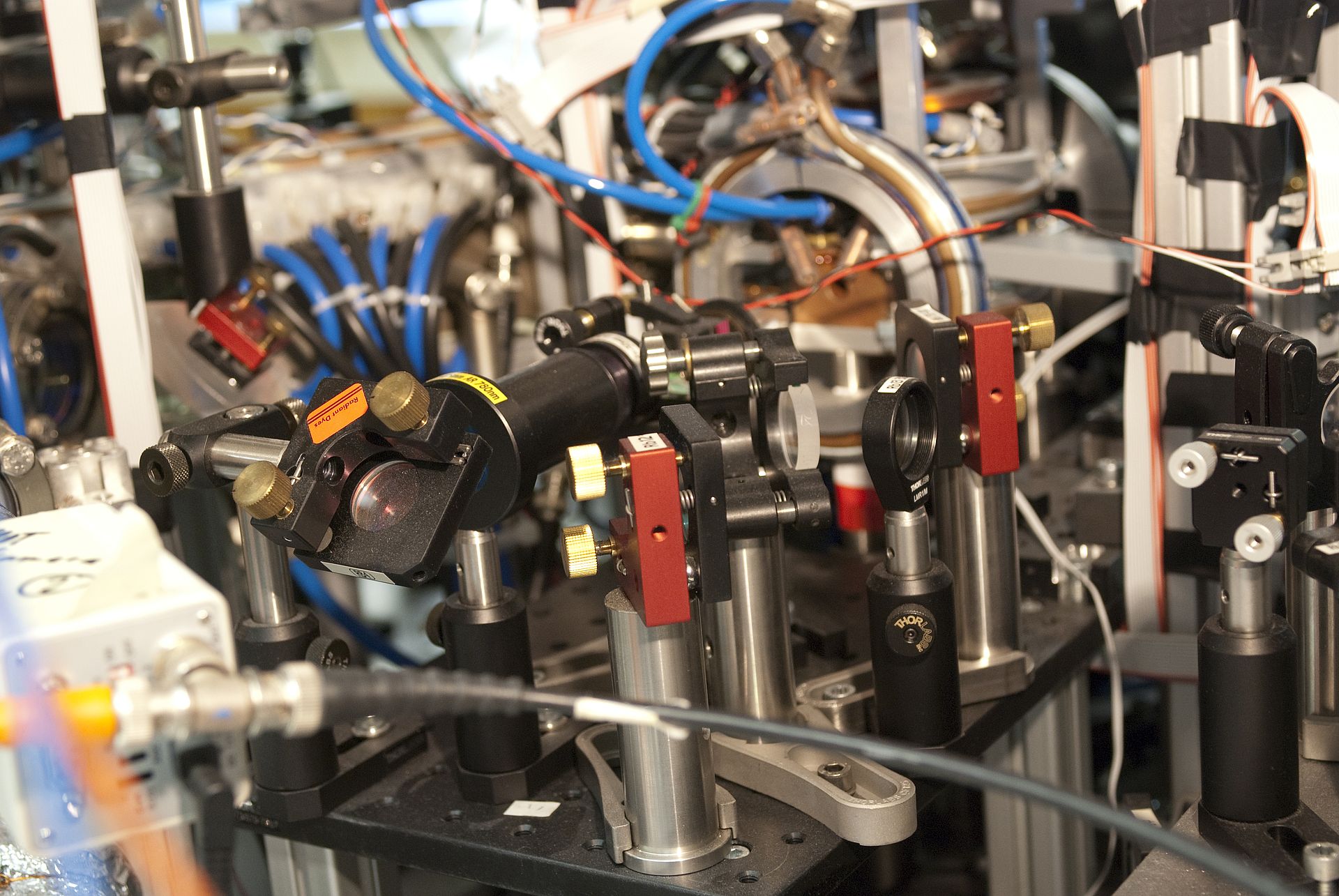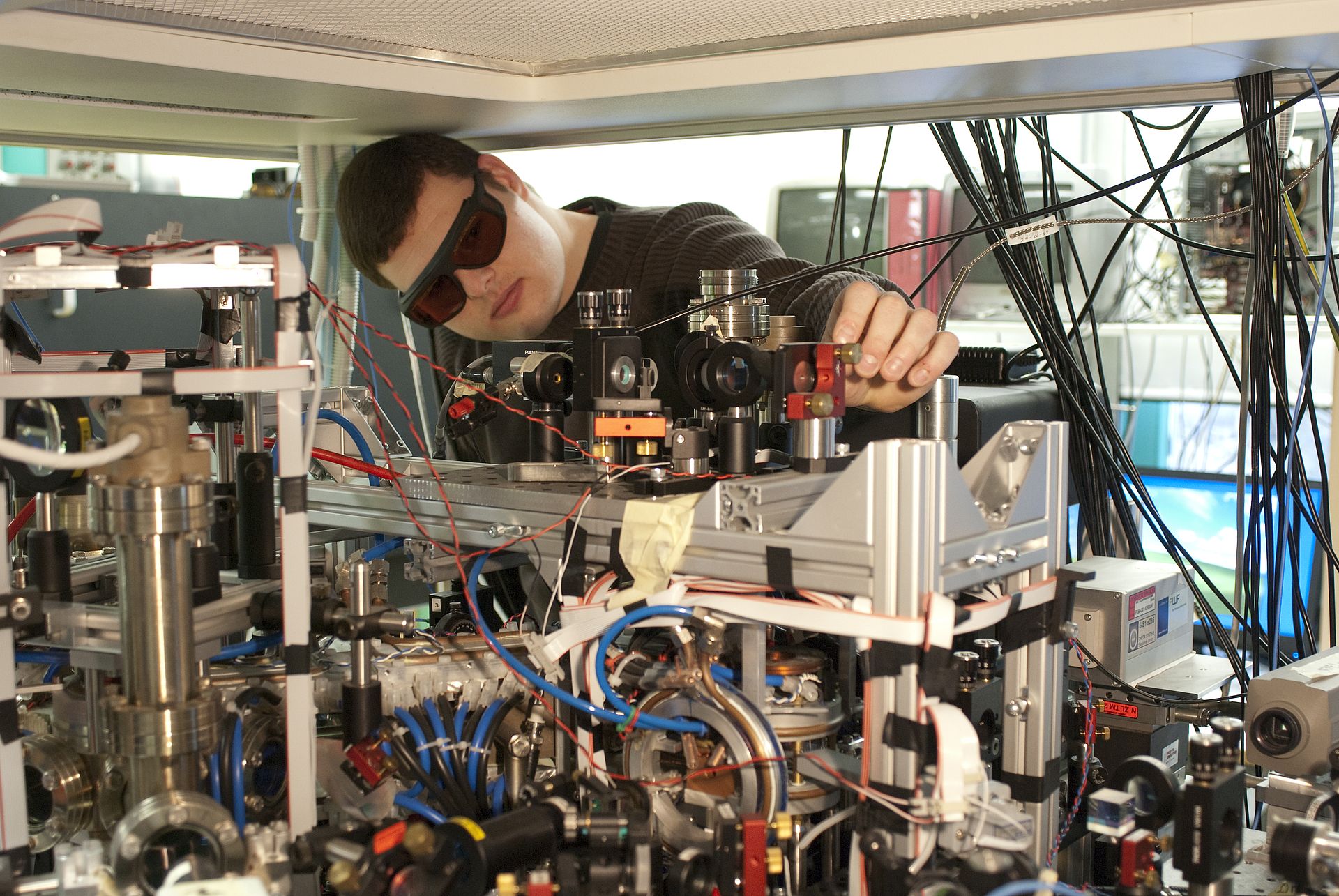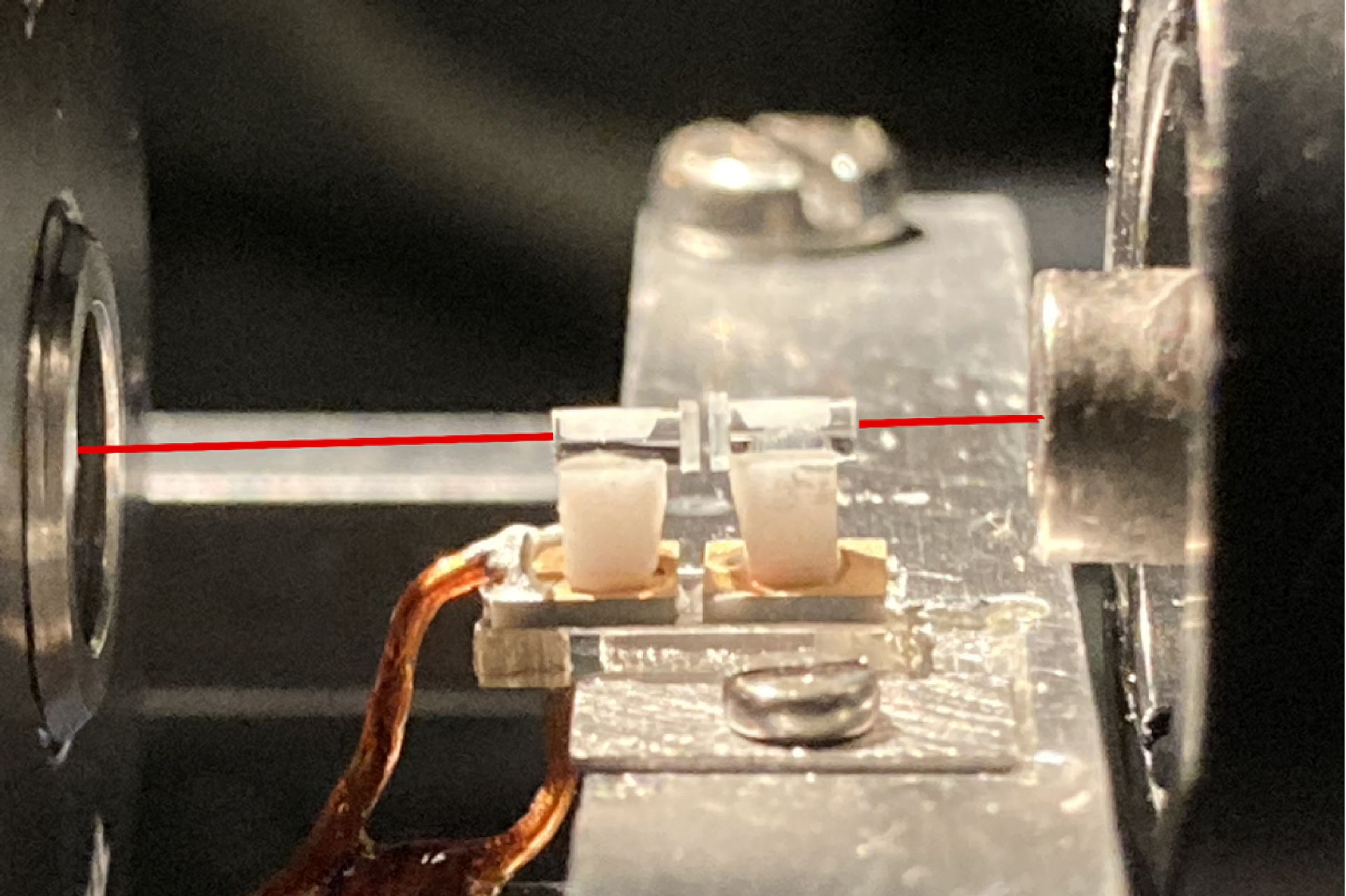Rubidium Cavity laboratory
Our main goal is to perform cavity enhanced ultracold chemistry experiments with Rubidium (Rb) atoms to produce individual Rb2 molecules in precisely defined quantum states. The reaction will involve a photon which is trapped in the optical cavity.
- Each molecule will be trapped in a single site of an optical lattice
- Collisions between molecules are suppressed
- Detect reactions on single particle level
- Strong matter-light coupling
- Detect molecules non-destructively
- Study collective effects like superradiance

For these planned experiments, we are currently upgrading our experimental setup of our previous Rb-BEC machine. The new science chamber (see images below) will contain a a high-Q optical cavity, a channeltron and a high NA lens. A 3D optical lattice, consisting of three intersecting laser beams (L1, L2, L3) will hold the particles. The channeltron will detect single particles after they have been state-selectively ionizied. For a more detailed description of the whole system, please visit the Rubidium cavity experiment.

Projects:
In our built up phase we can offer a number of smaller projects which suitable for bachelor and master projects. Possible projects are for example : a) the detection of ions with the channeltron b) Setting up the optical lattice c) Transporting atoms over a distance of a few mm with a movable optical lattice.
Are you interested in joining our team? Would you like to explore the exciting field of ultracold quantum gases?
Then, please, get in touch with us!
Published research highlights
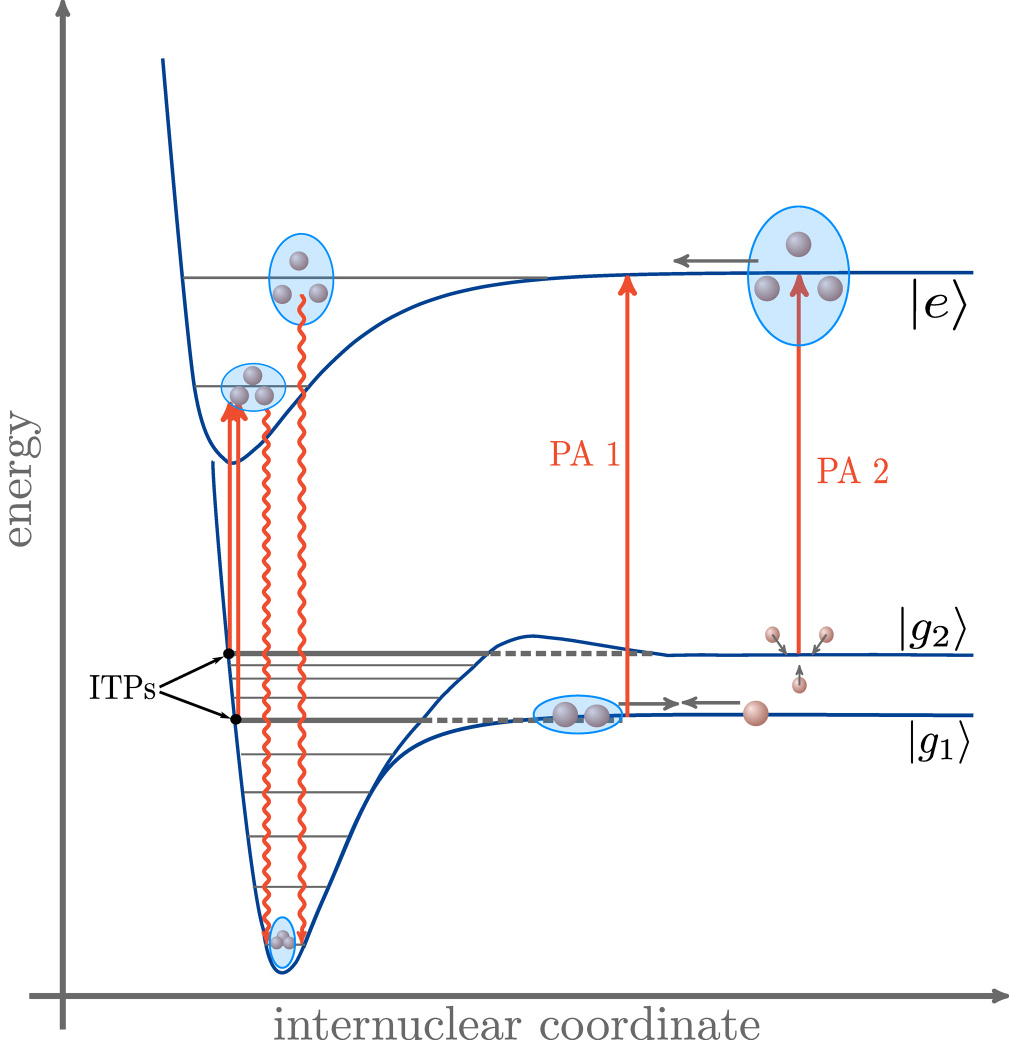
Towards photoassociation processes of ultracold rubidium trimers
Jan Schnabel et. al. PHYSICAL REVIEW A 103, 022820 (2021)
We theoretically investigate the prospects for photoassociation (PA) of Rb3 , in particular at close range. We provide an overview of accessible states and possible transitions. The major focus is placed on the calculation of equilibrium structures, the survey of spin-orbit effects, and the investigation of transition dipole moments. Furthermore we discuss Franck-Condon overlaps and special aspects of trimers including the (pseudo) Jahn-Teller effect and the resulting topology of adiabatic potential-energy surfaces. With this we identify concrete and suitable PA transitions to potentially produce long-lived trimer bound states. Calculations are performed using the multireference configuration-interaction method together with a large-core effective core potential and a core-polarization potential with a large uncontracted even-tempered basis set.
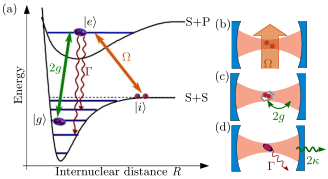
Cavity-controlled formation of ultracold molecules
Tobias Kampschulte and Johannes Hecker Denschlag New J. Phys. 20 (2018) 123015
Ultracold ground-state molecules can be formed from ultracold atoms via photoassociation followed by a spontaneous emission process. Typically, the molecular products are distributed over a range of final states. Here, we propose to use an optical cavity with high cooperativity to selectively enhance the population of a pre-determined final state by controlling the spontaneous emission. During this process, a photon will be emitted into the cavity mode. Detection of this photon heralds a single reaction. We discuss the efficiency and the dynamics of cavity-assisted molecule formation in the frame of realistic parameters that can be achieved in current ultracold-atom setups. In particular, we consider the production of Rb2 molecules in the a3Σu triplet ground state. Moreover, when working with more than two atoms in the cavity, collective enhancement effects in chemistry should be observable.
Former research projects of the Rb lattice experiment
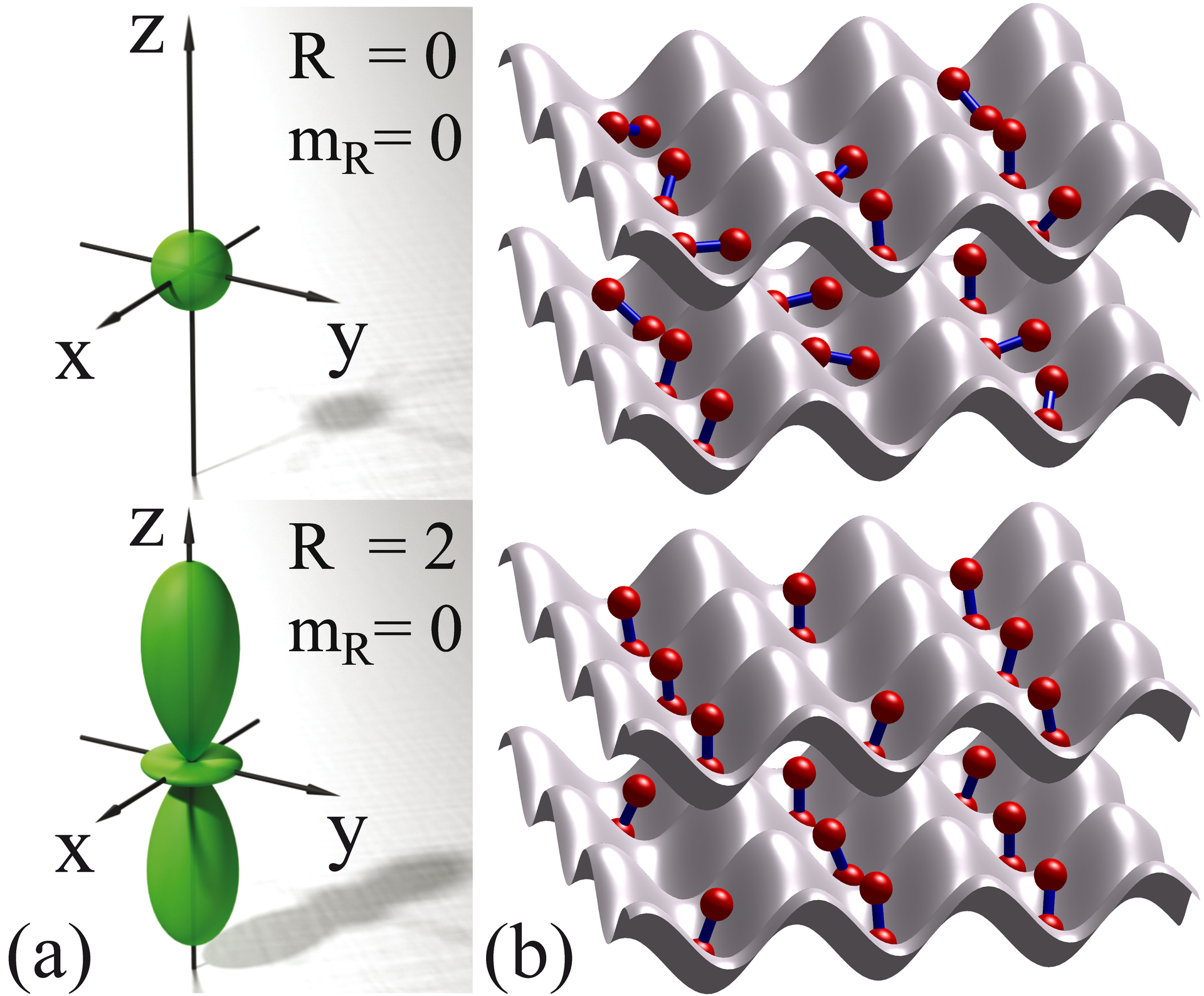
Axis alignment of molecules in an optical lattice
Deiß et. al. PRL 113, 233004 (2014) and Deiß et. al. Physik in unserer Zeit 2/2015 pages 60-61 (2015)
We have controlled the alignment of the molecular axis of nonpolar Rb2 molecules by preparing specific, precisely defined rotational quantum states. The moelcules were trapped in a 3D optical lattice and their alignment was probed by measuring the molecular polarizabilities for all three directions of space. For a measurement of the polarizability of triplet Rb2 molecules in their rovibrational ground state, see also: Deiß New. J. Phys. 17, 065019 (2015)

Collision experiments with ultracold Rb molecules
Drews et. al. Nat. Commun. 8, 14854 (2017)
We have carried out controlled collisions of Rb2 molecules. These molecules were prepared in a 3D optical lattice with no more than a single molecule per lattice site. Afterwards one of the lattice beams was switched off such that molecules could collide within an array of quasi-1D potential tubes. We have measured the decay rates for specific molecular states. Interestingly we found similar decay rates for the triplet rovibrational ground state and rotationally or vibrationally excited states.
High precision spectroscopy
Deiß et. al. New J. Phys. 17, 083032 (2015) and Drews et. al. Phys. Rev. A 95, 062507 (2017)
We have investigated the level structure of different electronic states of the Rb2 molecule, typically achieving a resolution of the vibrational, rotational, hyperfine, and magnetic quantum number degrees of freedom. For this we used different techniques such as photoassociation, photoexcitation and dark state spectroscopy.
Team & Laboratory Picture
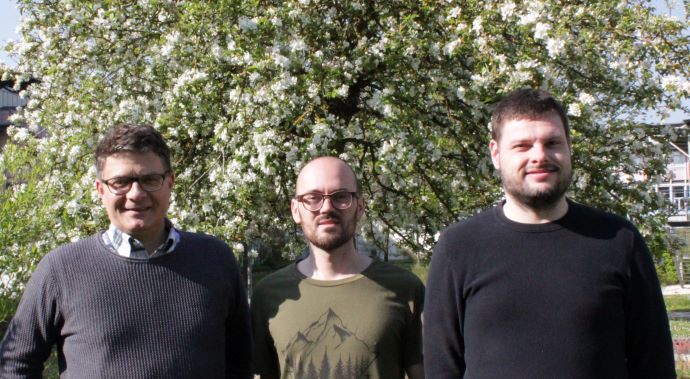
The team (left to right): Prof. Dr. Johannes Hecker Denschlag, Simon Rupp, Dr. Markus Deiß

